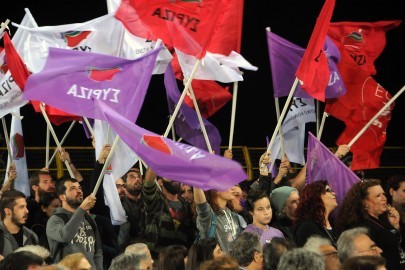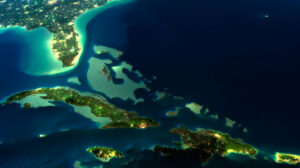Alexis Tsipras brushed aside Prime Minister Antonis Samaras’ party and rode to a decisive victory in the Greek elections on Sunday. The main opposition Radical Left Coalition took 36.5% of the vote, leaving behind ND with 27.7%, according to official projections.
SYRIZA was formally been launched in 2004, from the long-winded Space for Dialogue for the Unity and Common Action of the Left, which at the time was composed of various organizations on the Greek left — from different ideological and historical backgrounds but sharing common quest for leftist unity.
The parties that had originally formed SYRIZA in January 2004 were:
- Synaspismos (SYN)
- The Renewing Communist Ecological Left (AKOA)
- The International Workers Left (DEA)
- The Movement of the United in Action Left (KEDA)
- Active Citizens (a political organization associated with WW2 hero Manolis Gletzos)
- Other independent leftist groups
The Greek Communist Party (KKE) had participated in the “Space” but decided not to take part in the Coalition, which subsequently gathered 241,539 votes.
Just three years after its creation, the SYRIZA party was a big surprise in the 2007 Greek legislative election gaining an unexpected 5.04%.
On Nov. 27, 2007, SYRIZA leader Alekos Alavanos announced that for private reasons he would not renew his leadership. It was then that 33-year-old Alexis Tsipras, a municipal councilor, was elected as party president on Feb. 10, 2008.
In 2012, SYRIZA became the second largest party in Greece’s parliament and the main opposition party. It came first in the 2014 European Parliament election while polls showed that it had become the country’s most popular party in mid-2014.
Ask me anything
Explore related questions





